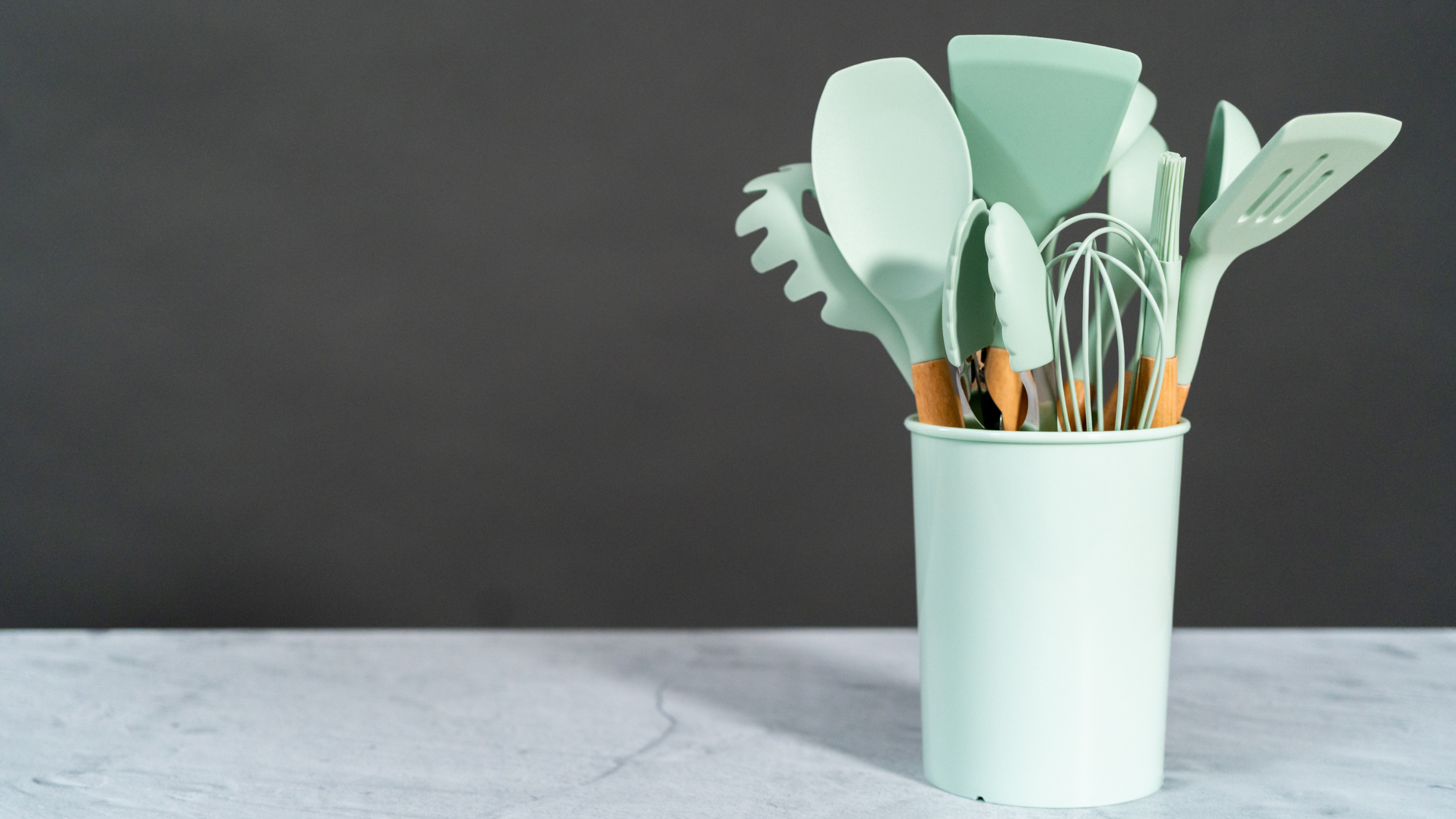One of the materials often recommended as a better replacement for plastics in the kitchen is silicone. It’s widely used in baby bottles, utensils, bakeware, ice trays, popsicle molds, etc. I have a lot of silicone kitchen items and I love them but there are a few things to keep in mind when using silicone in the kitchen.
Safer than plastic?
In this case, the answer is…it depends. Silicone is made by mixing silicon (heated silica or sand) with petroleum products and there is not a ton of information regarding its safety. Silicone is generally considered a safer alternative to plastic because it’s more durable than plastic and it doesn’t appear to break down and leach harmful chemicals if used under the right conditions.
Best to avoid heat
One condition to avoid is extended exposure to heat. The chemicals in silicone are called siloxanes (known as D4, D5, and D6). Siloxanes can migrate out of silicone and into foods when heated, usually above 300ºF. D4 and D5 are persistent in the environment, don’t break down, and can, therefore, accumulate in bodies. Animal studies have shown that D4 has endocrine disrupting qualities and can affect menstrual cycles and uterine weights.
Safe for other uses
Silicone is likely a safer alternative for straws, baby bottles, etc and a 2012 study looking at whether siloxanes migrate out of silicone nipples into milk found that there was no contamination after 6 hours of contact. Silicone utensils are also safer for use as their contact with heat is not prolonged enough to cause any migration. Silicone should also be a better alternative to plastic for freezer use, as an alternative to single use ziplocks, and other storage solutions.
Important Environmental Considerations:
Like plastic items, silicone doesn’t break down and will persist in the environment but unlike plastic, it doesn’t break down into micro fragments. If replacing single use plastics, I think it’s a good alternative but the fact that it is not readily recyclable and will persist in landfills is something to be mindful of.
Best options from an environmental standpoint:
When looking through this lens, glass, cloth or waxed bags and wraps, or stainless steel are all better options. These are easily recyclable (metal and glass), or biodegradable (cloth).
Final thoughts:
Due to its durability, I think silicone is a better alternative to plastic, especially single use plastic. When purchasing, be sure to look for high quality medical or food grade silicones that are BPA, BPS, and Phthalate free.
I’ll be keeping my silicone baking sheets but may use them instead for cooling baked goods instead of baking. If You Care parchment paper and muffin wrappers are a great alternative for baking.
Do you use a lot of silicone in the kitchen? What are your thoughts?








0 Comments